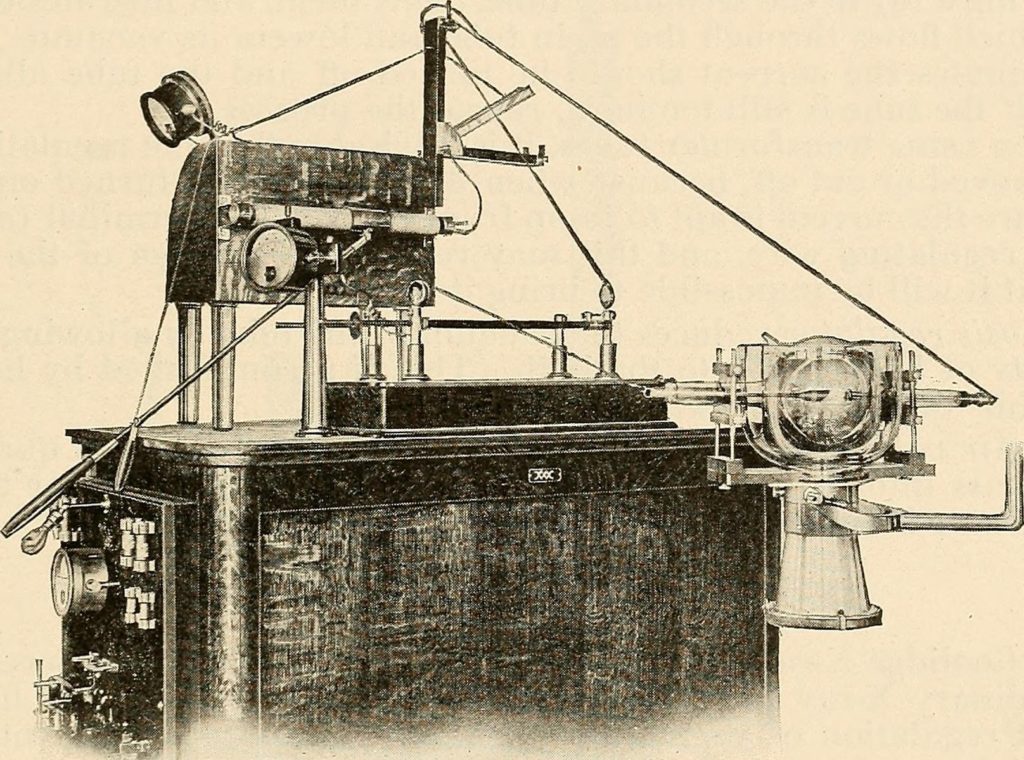The origins of electromedicine
The extremely innovative Egyptians already relied on extraordinary and almost visionary means of natural medicine. They used the electricity from a fish to treat pain, as a so-called "analgesic" and - if the ancient papyrus scrolls are to be believed - achieved amazing success in pain relief.
The fish used for therapeutic purposes was the “electric eel”, an animal with extremely high current that discharged with a rattling sound.
The patients had to stand with both (bare) feet on the fixed electric eel, which was in a fearful-aggressive state and was now constantly producing a stream of high intensity.
The constantly generated electric shocks caused a current to flow through the patient's extremities via their bare feet until their legs became numb and the pain subsided.
The knowledgeable Egyptians used current therapy with success for the gout that was rampant at the time and for associated pain until the Egyptian dynasties and all their structures were swept away by the Romans.
After the Roman legions under their Caesars had conquered the European continent and parts of Africa over the centuries, the cases of gout among the legionnaires and the Roman nobles who commanded them increased.
In particular, the deployment in Germania, which was cold and humid at the time, increased the mercenaries' illnesses; gout struck down entire legions.
Then people in higher circles remembered a healing method that had been seen and ridiculed by Egyptian herbalists centuries ago.
In the 1st century AD, the Roman historian Scribonius Largus described an amazing healing method that seemed to provide at least temporary relief from excruciating pain for pain-stricken Romans. For this purpose, the Roman paramedics (military doctors) obtained a fish known as the “torpedo fish,” whose electric shocks were painful and feared.
This is where what the Romans called “electrotherapy” began; The black-colored torpedo fish, commonly known as “the electric eel,” were brought by helpers under the feet of the patients being treated, who, trembling with fear, awaited the terrible electric shocks from the electric eel.
The electric shocks from the torpedo fish then flowed through the patient's body until a pain-numbing analgia occurred and the pain in the bones, muscles and nerves gave way to a pleasant anesthesia.
Unfortunately, this electrotherapy was lost for many centuries in the turmoil of the Middle Ages and it was only in modern times, in 1747, that an Italian professor managed to build on the electromedical healing successes of his Roman ancestors.
He placed a metal bracket that acted as an electrode on the paralyzed arm of a journeyman blacksmith and sent an electric current from a source unknown to me (it must have been a torpedo fish) through the craftsman's paralyzed arm, which came back on after a successfully completed series of electrical stimulations – albeit limited – became functional; That meant: the paralysis was lifted.
In the period up to the early 20th century, researchers and inventors around the world developed, invented and constructed electromedical devices and put forward therapeutic theories about how electricity affected the human organism and what it did.
The forerunners of today's modern electromedical devices were electrification machines, which were successfully used by Professor Sigmund Freud at the turn of the 20th century to treat mentally ill people.
Electrical stimulation was the buzzword of the era and today you can admire the electrical apparatus and devices in all technical museums around the world that doctors used to treat patients through electrical stimulation of the brain and extremities.
In 1903, a device was introduced to the public, the so-called “Electro-Sleeper,” with which doctors apparently achieved remarkable success in treating insomnia.
Until about 1905, doctors used the term “Electro Sleep,” which was then relatively quickly replaced by the newly coined term “Cranial Electrical Stimulation.”
Then - from around 1910 - the aforementioned “Flexner Report” brought about a planned suppression and boycott of electromedicine in North America and thus also in the rest of the scientific world.
Electromedicine had – at least officially – ceased to exist; It was only part of the eventful history of medicine and would only experience a renaissance around 70 years later, led by Dr. Robert C. Beck, Dr. Steven Kaali and other inventors and researchers have been sustainably designed.
I report on this and the renewed boycott and suppression of the newly awakened electromedicine by relevant circles after the Second World War elsewhere in this paper.
By the way: Electrotherapeutic stimulation through controlled electrification is in fact not a modern invention, but a process that has been tried and tested for decades. The boom in electromedicine began after the invention of machine-generated electricity by the German Werner von Siemens.
Even before the turn of the 20th century, it was proven that remarkable electromedical devices were available not only across America, with which electrotherapy against a wide range of illnesses seemed possible. In 1897, a battery-operated electrifying machine was advertised that people could use to treat themselves. In 1897, a battery-operated electrifying machine was advertised that people could use to treat themselves.
Then - in 1908 - a large department store group sold a device that went on sale under the name “Electric Medical Battery” and was very popular.
Then - in 1910 - a certain Abraham Flexner submitted a report on behalf of the pharmaceutical industry controlled by Rockefeller Sen., the so-called "Flexner Report".
This Mister Flexner actually managed to enforce a de facto ban on electromedicine at all American universities and colleges through threats and boycotts.
And that's not all: The Flexner Report caused a lasting disappearance of all knowledge about electromedicine, with the result that research, teaching and development stagnated and ultimately disappeared from the university scene and from the public's focus.
And this ultimately led to the production and distribution of electromedical devices and thus also the therapeutic use and advertising being banned and eliminated.
This ostracism by the scientific community, private doctors and the pharmaceutical industry was to last for almost 70 years, until modern times.
But not all scientists and researchers were silenced and silenced by the boycott.
Now the pioneers of electromedicine courageously came onto the scene and published their scientific hypotheses and experimental protocols despite the ostracism.
We're talking about Dr. Wilhelm Reich, the inventor of the orgone theory, whose fate is reported elsewhere in this treatise.
Then came Dr. Royal Raymond Rife, a brilliant inventor who laid the foundations of frequency therapy and invented the first “zapper” in 1930. Dr. Even before World War II, Rife claimed that he was able to cure terminal cancer by detecting special resonance frequencies of individual bacteria and viruses and using them therapeutically.
A certain Dr. Georges Lakhovsky developed completely new approaches to electromedical thinking and built a device called the “Multiple Wave Oscillator”, which also became popular under the name “Lakhovsky antenna”. Dr. Georges Lakhovsky, researcher Nikola Tesla and other scientists hypothesized that all things in nature have their own resonant frequencies.
This hypothesis also included the claim that every bacteria, virus, fungus and parasite had its own resonance frequencies. But they all met the fate of outsiders. They were dragged to court and/or declared insane, sent to psychiatric hospitals or prisons, ruined financially and as scientists and exposed, suffered mysterious accidents or died under circumstances that were never clarified.
The scientists Antoine Priore, Alfons Wagner, Rudolf Pekar and others also dealt with the basics and further development of bio-electromedicine in the various research fields. Dissenting doctors like Dr. Issels in Germany used alternative cancer therapies in the 1950s.
But they all met the fate of outsiders. They were dragged to court and/or declared insane, sent to psychiatric hospitals or prisons, ruined financially and as scientists and exposed, suffered mysterious accidents or died under circumstances that were never clarified.


